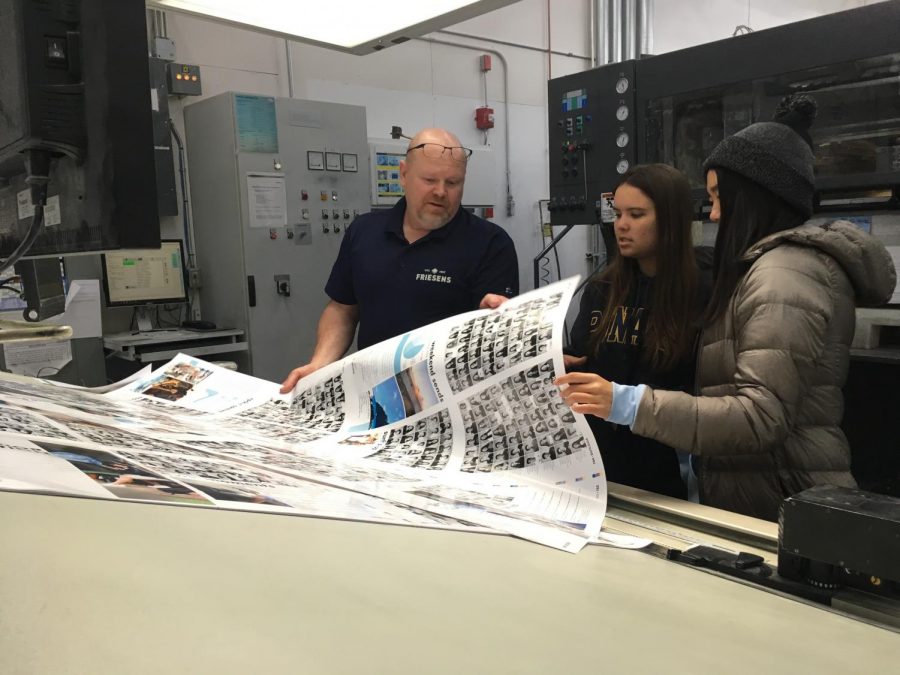At the end of every school year, each Punahou Academy student receives an Oahuan. Not many know the amount of work that goes into creating the book, as most people never think about it. When the Academy transitioned to distance learning due to the coronavirus outbreak, the yearbook wasn’t completed yet, resulting in the editors having to put everything onto laptops. The fact that the staff was able to finish the yearbook is an accomplishment in itself, and they were still able to make the deadline. The Oahuan staff deserves more credit than they get and people should know what they actually do.
I know for myself, when I first got my Oahuan as a freshman, I noticed it was the 97th edition, meaning when I was going to graduate, it would be the 100th. Back then, I put no thought into how the Oahuan was made and frankly I did not even care; I just wanted my yearbook. Sophomore year, I applied to be on staff and I became a sports editor my junior year. Senior year, I became the Editor-in-Chief, meaning I was responsible for most of the work that went into the Oahuan.
25 Editors go into the room during most of their breaks, producing spreads, writing articles, and interviewing hundreds of students. Not only do they go in during their breaks, but two Saturdays a month from 9-3 editors come in as well.
“Going into the room during all of my free time really helped me finish all of my spreads on time,” said editor Cosette Wu ’21. “I also enjoyed spending my breaks in the room because I would always find yearbook friends in there to hang out with.”
When distance learning began, about 50 pages of the book hadn’t been completed, including the entire index. The editors downloaded all of the files onto the three laptops that had InDesign, the application we use to produce everything. From there, PDFs were sent to different meta editors through email. Meta editors look at all the pages in the book and do not actually create spreads. They check the photo quality, edit the text on the page, check for all the spacing, and check the names are spelt correctly on each page. Normally it takes about 10 tries before a spread passes one of the categories.
“There is so much work that goes into each page and people don’t know that,” said Audrey Nguyen ’20. “More people need to be aware of what the Oahuan does and how much effort we put into it.”
After many emails sent back and forth between editors, the staff finished all of the pages minus the index in about two weeks.
Creating the index is already difficult. The index editors have to compile all of the spreads and tag each name individually. Then they run the index. However, the index makes many mistakes once it has been run. So the index editors have to go through each letter of the alphabet and make sure everything is completed for each person, faculty and students, which is over 1500 people.
“Index was difficult because we couldn’t directly communicate with everyone,” said index editor Katie Ching ’20. “Not only that, but we didn’t have enough computers and had so many errors. But luckily with the help of everyone, we were able to finish on time!”
Somehow despite distance learning, the Oahuan staff was still able to work together to finish the book. Personally, I spent about five to six hours a day for two weeks working on the yearbook. This meant I was helping check names or passing spreads, as I was considered a meta editor. Most people don’t realize the amount of work required to create a yearbook that wins awards each year. We should all be more aware of the work that is put into the book and the amount of time and effort editors put into creating something that will last a lifetime.
So the next time you see an Oahuan editor, be sure to thank them.


Alex Selarque • May 26, 2020 at 7:57 am
Kudos to Mia and the 2020 Oahuan staff for overcoming many challenges, some of which were unique this year. You all worked so well as a team and this article gives a nice glimpse into the effort and dedication it takes for this level of success. As advisor, this was my 24th volume and every year we are blessed to have a volunteer staff that is intelligent, passionate, and creative in working both independently and collaboratively to help record the annual history of the place and the people at Punahou.
The photo in the article was taken at Friesens where the 2020 and 2021 Editor-in-Chief traveled to Altona, Manitoba to run a press check at the printing plant in Canada in February when the outside temperature ranged from 0-24F.
The yearbook has been an ideal grade-free project based competency experience that requires a balance of technical, interpersonal, and emotional intelligence applied with discipline and creativity. Congratulations to the 2020 Oahuan editors, photographers, artists, and staffers.